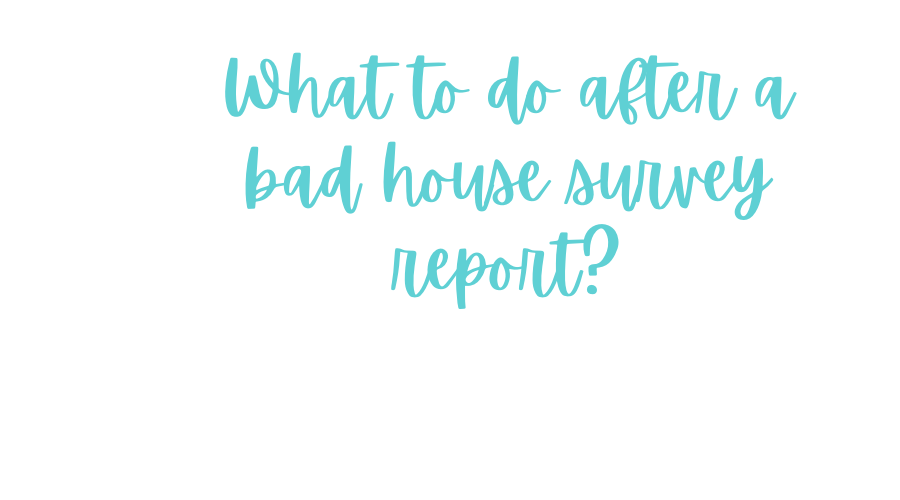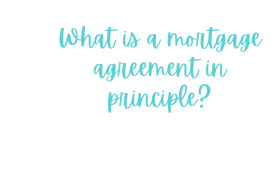Getting a survey is a really important part of buying a home. Checking for hidden expenses is the only way you can be sure that you know exactly what you are buying.
Unfortunately, sometimes a survey will reveal hidden problems that you weren’t aware of, which can be a bit of a shock, especially when you thought you’d found your perfect home.
If this happens, don’t panic. The good news is that there is lots that you can do to get things back on track. The key thing is to keep calm and know that most things can be easily solved.
Plus, on a brighter note, if you have to deal with a bad survey, sometimes it can be an opportunity to get a better deal!
(If you haven’t yet decided what type of survey you want, this article will help you – What type of survey do I need?).
So, let’s get started: follow these four simple steps to get buying your first home back on track.
Step 1: Find out what the survey report means
Some things can sound a lot worse than they actually are, so try and keep a cool head.
Finding out what the report means is your first step. See if you can talk with your surveyor directly; they should be happy to talk you through the issues and answer your questions.
Make a separate list of the issues that you want to look into, so you can keep track of them.
You may discover that some of the problems are actually quite common in properties like the one you are buying and are not really considered a big deal. If there are bigger issues, the surveyor can give you an idea of what work might be needed to fix the problem.
Although a surveyor will not advise you on whether or not to buy the property – they can give you information that will help you make a decision on what to do next.
Step 2: Understand the problem
Having some knowledge about the problem will really help you work through this process.
Arm yourself with some basic knowledge so that you feel like you have a better understanding of the problem and what other people say about resolving it.
For example, if there is damp, can you learn more about the different types of damp and various ways it can be treated.
Our ‘top tip’ is to watch several videos on YouTube or do some online research. This will give you lots of information sources to get better informed about what this all means and make it less scary.
You may even have friends or family that have had to deal with a similar problem themselves, so make sure you ask around.
Once you have a better idea of what the issues mean, it’s time to bring in a professional to help you understand the costs and effort involved in getting them resolved.
Step 3: Ask professionals to quote
Once you have a basic understanding of what needs to be fixed, it’s time to seek out professionals who specialise in that area to quote for doing the work.
For each problem the survey has highlighted, you can get a quote from a specific tradesperson, whether that’s for roofing, damp, electrics etc. It’s a good idea to get two quotes for each job too so that you can compare prices and get different opinions.
Don’t worry if you are unsure; tradespeople come across these problems regularly. For now, you are asking them for a ‘worst-case scenario’ quote, so you know exactly what needs to be done and how much it would cost to put the property right.
Top tip: Don’t panic! It can be easy to worry that if you take your time on this, the seller will pull out and go with another buyer. Clearly communicate with the estate agent what issues have been found, keep them updated and use them to help you book in any tradespeople to visit the property.
Step 4: Decide what to do next
Once you know how much it will cost to fix the problems, it’s time to make a decision on what to do next. There are three options for you to think about:
1. Pulling out of the sale
If it seems like the issues are too big or too expensive, or it’s just changed how you feel about the property, it’s perfectly okay to say that you no longer wish to proceed.
You are not legally bound to buying the house at this stage, so you can pull out of the sale.
But note that you may be into expenses for pulling out. Also, you should check what has happened in the market regarding availability of alternative homes before making a quick decision just based on cost as things may have changed.
2. Ask the seller if they will fix the problems
The seller might be willing to fix the problems if it means the sale will still go ahead. Discuss this with the estate agent and your solicitor. They can ask the seller on your behalf.
Make a note that if they agree to it, you will need to check that the work has been completed to a good standard before you exchange contracts – getting a second survey at this stage is probably a good idea, as well as asking for copies of receipts and warranties.
3. Ask to reduce the price
Now you know how much it will cost to put the property right, you may have some ‘bargaining power’. You could go back to the estate agent and request that the seller drops the sale price by the amount it will cost you to fix the problems, but it will depend on several other factors.
Top tips for renegotiating the price:
- Offer to share the survey report and any quotes as evidence.
- Ask for a realistic discount; for example, be aware if this has already been factored into the price of the property, it will be unlikely to make a difference.
- Be ready to answer questions about the work needed and take your time to negotiate.
- Think about what you will do if the seller doesn’t agree.
There is always the chance that the seller is not willing or is unable to drop the price of the property.
If this is the case, you have to seriously consider your options. Are you prepared to lose the house, or would you pay the full price and pay for the repairs yourself?
Summary
Hopefully, you now feel suitably armed to deal with a bad survey if this happens to you.
Remember the four steps:
- Not to panic, talk to your surveyor,
- Find out more about the problem, so you understand it better yourself
- Get quotes from professionals and get a good understanding of everything you need to consider before going any further.
- Decide how best to move forward.
Still need to arrange survey quotes? Get quotes from RICS approved local surveyors with our comparison service. Or read up on the different types of survey.








